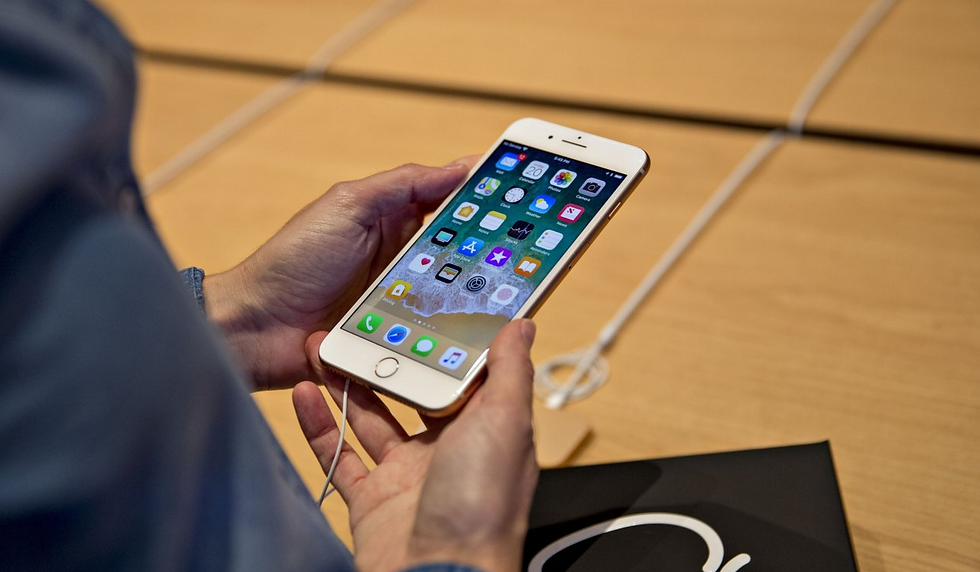Europe Becomes Weakest Global Smartphone Market With 9% Shipment Decline
- Flexi Group
- Sep 8, 2025
- 4 min read
Europe has officially taken the mantle as the weakest smartphone market in the world, after shipments across the region—excluding Russia—fell by 9 per cent year-on-year to just 28.7 million units in the second quarter of 2025, according to new figures from Canalys.

Analysts pointed to restrained consumer demand and a sluggish economic outlook as the key drivers behind the contraction, making Europe the worst-performing global region during the quarter.
Vendor performance under pressure
Samsung maintained its dominance at the top of the vendor rankings, but even the industry leader was not immune from decline. The company’s shipments fell by 10 per cent compared to the same quarter in 2024, bringing volumes down to 10.3 million units.
According to analysts, part of Samsung’s performance slump was linked to regulatory barriers: “The company’s volume performance was affected by the Galaxy A06 not being brought into European Union regulated markets due to eco-design regulations.”
Apple held on to second place, but it too faced contraction, with shipments slipping 4 per cent to 6.9 million units. However, the iPhone 16 series delivered a degree of stability. “A consistent performance by the iPhone 16 series partly offset the company’s slimmer portfolio, which covered fewer price segments compared with the second quarter of 2024,” analysts noted.
Xiaomi came in third, also declining 4 per cent to 5.4 million units. Its strong resurgence in Italy—where shipments rose by more than 50 per cent year-on-year—helped the brand balance out weaker demand in other European markets.
Motorola ranked fourth with 1.5 million units, representing an 18 per cent decline, while HONOR rounded out the top five vendors, growing 11 per cent year-on-year to reach 0.9 million units.
Market dynamics shaped by regulation and inventory strategies
Industry analysts say the first half of 2025 has been particularly challenging for European smartphone makers and distributors. “Players in Europe’s smartphone industry have had a tough first half of 2025, defined by sluggish end-user demand and conservative channel inventory strategies,” said Aaron West, Senior Analyst at Omdia.
West highlighted the impact of new EU rules, explaining: “Additionally, the EU eco-design and energy efficiency regulations came into force in late June, which vendors have spent years preparing for. Any vendors’ desire to stockpile channel inventory ahead of 20 June failed to materialise as the channel remained resistant to taking on any excess inventory.
Plus, some of the largest network operators required devices in their portfolios to be compliant a few months in advance.”
Despite the tough climate, West suggested the market could see improvement later in the year: “But a healthy channel dynamic positions the market for growth in the second half of the year, as industry players strive to get a positive return on the momentum from the major launch events.”
Market concentration and competition
Analysts at Canalys also observed a striking concentration of market share. “Market influence continues to shift toward the largest five players, which held a record-high 87 per cent combined market share in the second quarter of 2025,” said Runar Bjørhovde, Senior Analyst at Canalys.
This consolidation underscores both the strengths and challenges of the market. “While it reflects the importance of differentiated brands and scale for a profitable and sustainable business model for vendors, competition remains brutally fierce within the channel,” Bjørhovde explained. “Here, telcos, retailers, e-commerce specialists and direct channels are all competing intensely to acquire and retain customers. But growing dependence on a few vendors is making it hard to differentiate.”
He added that distribution dynamics have shifted: “In recent years, both direct-to-consumer and open-market channels have taken some share, mainly from operators.”
Bjørhovde also pointed to consumer motivations: “Our recent consumer study of 8,000 Europeans found that the draw toward direct purchases relates to a desire to engage with the brand alongside perceived customer service, while the draw to open-market channels largely relates to pricing. Operators remain a key route to the market for vendors and have been a key catalyst to drive adoption of, for example, 5G and eSIM capable smartphones.”
Outlook: Recovery expected but limited
While Europe’s smartphone market continues to struggle, Canalys expects growth to re-emerge over the medium term. “Europe’s smartphone market is undergoing a tough period, but we anticipate growth to return by 2026, powered by a low-end device replacement push and maturing AI propositions starting to capture consumer interest,” Bjørhovde said.
However, he cautioned against optimism beyond the mid-term: “Still, our long-term growth outlook is modest, as we only expect the market to grow by a compound annual growth rate of 1.7 per cent to 2029. Consequently, industry players must know why and how their customers buy. Understanding how buying journeys evolve as purchase motivations are reshaped is essential to know where and how industry players can influence consumers.”
Bjørhovde concluded with a warning for vendors in such a competitive landscape: “Particularly in a competitive region with a limited total addressable market, manoeuvring cleverly and effectively can become the difference between resiliently winning market share and potential market exits.”
By fLEXI tEAM





Comments